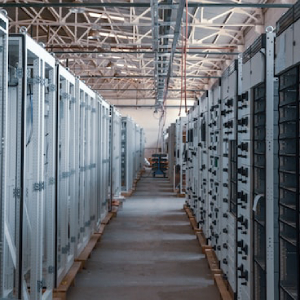What Is Erp Enterprise Resource Planning?
Содержание
We’ll explain exactly what ERP is, how it works, what it can do for your business, how to choose the right solution and much more. In the same report, ONC-HIT revealed that 97 percent of all reported hospitals possessed an ONC-certified EHR. This mismatch is indicative of a lag between purchase and adoption at roughly one third of non-federal U.S. hospitals. BMC works with 86% of the Forbes Global 50 and customers and partners around the world to create their future. Implementing a cloud-first EAS solution will be ideal for many organizations moving forward with many other services like data warehouses, endpoint security, email, and IT also available as cloud services. The primary obstacle for a cloud-first approach for EAS was the security and compliance requirements.
EOT Enables Energy Operators to Create Enterprise Wide Cloud Historian With the Release of Asset Model Explorer – PRUnderground
EOT Enables Energy Operators to Create Enterprise Wide Cloud Historian With the Release of Asset Model Explorer.
Posted: Mon, 12 Sep 2022 20:18:41 GMT [source]
Not only are consumers conducting business online now more than ever, but the actual IT infrastructure of our organization’s software and systems is largely constructed with modular components and cloud services. Consequently, private data, information assets, employee productivity, user experience, and brand reputation can suffer as a result of the negative impact of a cybersecurity breach. Consistent UX/UI. Across departments and roles, everyone uses the same user interface and has a similar user experience with an ERP. Modules for inventory management, HR and finance all have the same look and feel and shared functionality, provided you get them from the same vendor.
A lack of integration among systems is another indication you’re ready for ERP. The system can eliminate manual data transfers and fickle connections by pulling information from all key business functions into one place. ERP systems deliver the most value when a company has modules for each major business function and ensures timely, accurate data entry.
Erp Weaknesses
ERP software also provides total visibility, allowing management to access real-time data for decision-making. Low-latency networks use enterprise-level infrastructure components to reduce the delay of data flow. In many organizations, significant effort is required to monitor and maintain workforce information. What’s more, this data oftentimes becomes redundant or is even overlooked due its management by different individuals or departments.
These activities may include product development, material sourcing, production and logistics as well as the information systems that coordinate these activities. Information flows allow supply chain partners to coordinate their strategic and operational plans as well as the day-to-day flow of goods and materials through the supply chain. The physical flows include the manufacture, transport and storage of goods or materials. Enterprise systems are built on software platforms, such as SAP’s NetWeaver and Oracle’s Fusion, and databases. Total quality management aims to hold all parties involved in the production process as accountable for the overall quality of the final product or service. Manufacturing Resource Planning evolved from early Materials Requirement Planning systems by including the integration of additional data, such as employee and financial needs.
In such instances, an EAS should be flexible enough to quickly adapt to a changing workflow with minimal modification and without hindering the overall business process. Additionally, as an enterprise typically utilizes multiple software services and platforms, an EAS must have the ability to interact with these services using an API, plugins, extensions, etc. One of the most important aspects of improving the customer experience is having data stored in a way that can be easily analyzed. As the saying goes, “what gets measured, gets managed,” and the same applies for business data.
An order management module can speed fulfillment and delivery times and improve the customer experience. No single software application can facilitate all the needs of an organization. In most cases, there are specialized EAS applications suited for different requirements of the organization. Some of this application software can be listed as the following. This software needs to power an entire organization that may be spread across different geographical locations. So, it should be able to provide functionality and performance across all those locations of the organization.
Selecting The Right Eas Solution
Companies often begin with a finance module to automate basic accounting tasks and allow leaders to easily view available cash and the flow of money into and out of the organization. Products-based companies typically want to digitize inventory and order management right away because that can generate rapid and significant savings around procurement, storage and shipping. An ecommerce application that plugs into the ERP is a priority for sellers that rely on this sales channel. Services organizations, on the other hand, may start with a PSA application to simplify employee time and resource tracking and project billing. With on-premises software, companies purchase a perpetual license that’s more expensive, but it’s a one-time expense.
Overall, having a properly implemented infrastructure can be a factor in whether a business is profitable or not. Information technology infrastructure, or IT infrastructure, refers to the combined components needed for the operation and management of enterprise IT services and IT environments. As implemented by SecurAlarm, workflow management systems can also track pertinent information for partners and contractors working on an organization’s physical site. This includes the ability to segregate such groups from the workforce for reporting and tracking of any unique requirements. ERP Systems and software support multiple functions across the enterprise, mid-sized, or small businesses, including customizations for your industry.
Your infrastructure is not shared with other organizations, which is why this is sometimes called single-tenant. This setup can give the client greater control over the software and allow for more customizations, but it also creates more work for the business. Think of it as a middle ground between on-premises and true cloud software. An ERP must be able to support and integrate the processes that make your business successful, whether related to accounting, supply chain management or marketing. The right platform will have the ability to unify a diverse set of processes — connecting workflows that play crucial roles in the company’s success boosts productivity and visibility, and that translates to lower costs. Enterprise systems integrate a number of different applications, protocols and formats.
These integrated systems act as a business’s central hub for end-to-end workflow and data, allowing a variety of departments to access. Overall for enterprise systems that need enterprise data and / or development, ITSS will provides the following services. NetSuite has packaged the experience gained from tens of thousands of worldwide deployments over two decades into a set of leading practices that pave a clear path to success and are proven to deliver rapid business value. With NetSuite, you go live in a predictable timeframe — smart, stepped implementations begin with sales and span the entire customer lifecycle, so there’s continuity from sales to services to support.
- Customer Relationship Management software is discussed from two different standpoints in the text.
- Enterprise resource planning is a platform companies use to manage and integrate the essential parts of their businesses.
- Enterprise software, also known as enterprise application software , is computer software used to satisfy the needs of an organization rather than individual users.
- A high level of access to data allows leadership to assess and improve upon the company’s processes far more efficiently than if they had to wait months before having actionable data.
- Companies concerned about maintenance should thoroughly vet a potential supplier to ensure it offers a true vendor-managed SaaS system.
Regulations such as theSarbanes-Oxley Actdemand that investors receive a significant amount of data about a company’s operations, including information about the properties, assets and inventory management. One of the benefits of enterprise management systems is that much of the data these regulations require can be collected through automated means. Thus, enterprise systems can be used to ensure compliance with increasingly onerous federal regulations without taking personnel away from their essential customer service functions. In order to operate efficiently, companies are seeking ways to improve their business processes. Increasingly, companies are looking toward technology, such as enterprise systems, for solutions that improve their workflows and customer service process. Enterprise systems are large-scale software packages that are able to track and control all of the complex operations of a business.
What Is A Subsidiary Inventory Ledger?
Cut through the complexity of modern applications with a seamless, unified view of your cloud native technology landscape. Two-tier ERP is an approach that has gained traction among larger companies with subsidiaries, distinct business units or regional offices. Instead of forcing these business units or offices to use the legacy ERP, they run on a less-resource-intensive ERP — often a SaaS solution — that’s integrated with the Tier 1 system. Finally, more companies are recognizing the value of IoT devices, like sensors, scanners and cameras, that can feed information back to the ERP. A sensor that monitors the performance of a piece of warehouse automation equipment, for instance, could alert a manager when the machinery starts operating more slowly.
Newer systems go beyond that point and keep in contact with customers long after the initial sale has been finalized. The data can be shared by all functional areas of an organization up and down the value chain whenever and wherever necessary. Enterprise systems also allow businesses to increase their product offerings, thus increasing sales and profits more efficiently and effectively. The Net Stats box on page 250 provides hard data enterprise level systems about the top strategic reasons for pursuing enterprise-wide systems. Using an Enterprise Resource Planning system can be a major benefit for companies looking to streamline their customer service experience. ERPs allow businesses to automate their customer service process, which helps ensure that each employee is giving customers a consistent experience, and also ensuring that back office functions are as streamlined as possible.
Always ask for reference customers, and check out success stories. AI and machine learning, for example, can automate account reconciliations and flag transactions that call for a closer look. This saves the accounting team time and offloads a task most don’t look forward to.
How To Build A Sales Channel In Technology
The company had thousands of systems but could not keep pace with its rapid growth and used ineffective warehouse management systems. Once all departments are tied into the system, all data is collected on the server and becomes instantly available to those with permission to use it. Reports can be generated with metrics, graphs, or other visuals and aids a client might need to determine how the business and its departments are performing. Virtualization provides faster server provisioning, increases uptime, improves disaster recovery and saves energy. Organizations house multiple servers in rooms called server rooms or data centers. By integrating SecurAlarm product solutions with your Microsoft Active Directory, we can link an individual’s permission to enter your premises with their authorization to access your network.
Automation saves time, which can then be used towards efforts to respond to customer requests for product information and to forecast for new products. If employees are spending less time on tracking down a customer’s order, they can spend more time developing long-lasting, profitable customer relationships. Enterprise architecture, in a business context, may have organizations distinguish their enterprise architecture from the technical architecture required to build and run applications. Working from within an enterprise architecture framework will help define this.
Customer Relationship Management
With a hosted cloud solution, a company purchases a license but runs it on remote servers managed by a third party. The servers and other hardware https://globalcloudteam.com/ is often rented from the hosting company. Your data is stored in a private cloud as a separate instance of the ERP used by just one company.
Each of these modules consists of multiple applications that execute end-to-end business processes. For example, the sales module includes the applications necessary to create and manage sales contracts, sales orders, sales invoices and sales order pricing. The swift advancements in hardware, software, and networks technology have caused the management of enterprise wide computing network systems has become gradually a more challenging job. The range and character of nowadays computing environments are incrementally changing from traditional, one-on-one client/server fundamental interaction to the brand new cooperative paradigm.
IT infrastructure setups vary by business needs and goals, but some goals are universal for every enterprise. The optimal infrastructure will provide a business high-performance storage, a low-latency network, security, an optimized wide area network , virtualization and zero downtime. A core hardware component needed for an enterprise IT infrastructure is a server. Serversare essentially computers that allow multiple users to access and share resources. ERP systems will also provide transparency into your complete business process by tracking all aspects of production, logistics, and financials.
Request Support
In inclusion, data owners may not completely trust provider discretion; in the contrast, preventing a provider from looking over the data stored on its own devise and machines are extremely hard. The demand that the database component remains confidential to the database server itself introduces a couple of new fascinating challenges. Traditional encrypted DBMSs assume trust in the DBMS itself, which can subsequently decrypt data for query execution.
That’s where these implementation best practices come in — adhering to these as you begin your project can make it a better experience with fewer issues. Ensure users have everything they need to take advantage of the new system. This is an ongoing process and could include additional configurations, often with the help of the vendor or specialized consultants.


















 IT Management Consultancy
IT Management Consultancy


